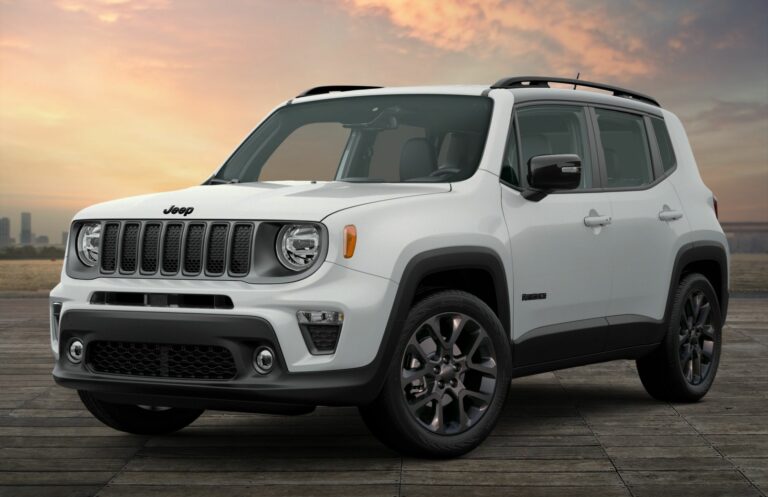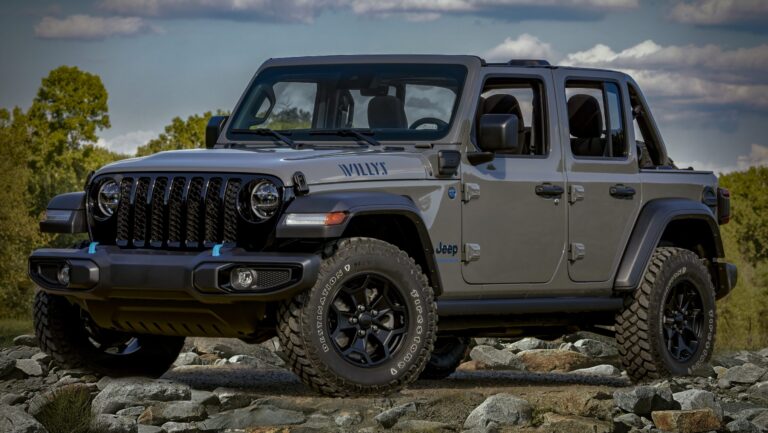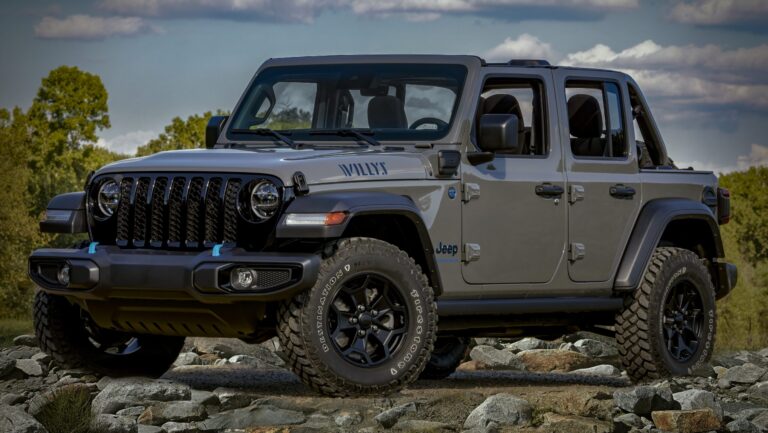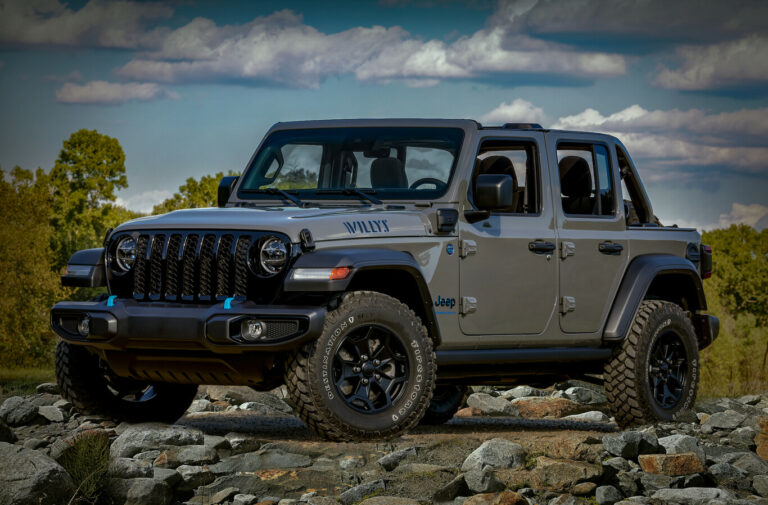Jeep Wrangler 2 Door 0-60: Understanding Performance in an Icon
Jeep Wrangler 2 Door 0-60: Understanding Performance in an Icon jeeps.truckstrend.com
The Jeep Wrangler, an undisputed icon of adventure and off-road capability, evokes images of rocky trails, open skies, and untamed wilderness. While its primary mission has always been conquering challenging terrain, an increasing number of enthusiasts and prospective owners are curious about its on-road performance, specifically its 0-60 mph acceleration. This metric, traditionally associated with sports cars and sedans, offers a glimpse into the Wrangler’s power delivery and responsiveness in everyday driving scenarios.
Understanding the Jeep Wrangler 2 Door’s 0-60 time isn’t about transforming it into a drag racer; it’s about appreciating its engineering, recognizing its inherent design priorities, and making informed decisions. For the two-door variant, which is typically lighter and often more nimble than its four-door counterpart, the 0-60 sprint provides a unique perspective on its blend of rugged utility and surprising agility. This comprehensive guide will delve into what influences the 2-door Wrangler’s acceleration, its historical evolution, current performance figures, and practical insights for those who value both trail prowess and on-road responsiveness.
Jeep Wrangler 2 Door 0-60: Understanding Performance in an Icon
The Context of 0-60 for a Jeep Wrangler 2 Door
Before diving into specific numbers, it’s crucial to set the stage. The Jeep Wrangler, particularly the 2-door model, is engineered from the ground up for off-road dominance. This fundamental design philosophy dictates many aspects that inherently affect its 0-60 performance.
- Aerodynamics of a Brick: The Wrangler’s boxy, upright design, while excellent for visibility and interior space, is far from aerodynamic. This creates significant air resistance, especially at higher speeds, requiring more power to overcome.
- Weight and Construction: Built with robust body-on-frame construction, solid axles, and heavy-duty components, the Wrangler is inherently weighty. While the 2-door is lighter than the 4-door, it’s still a substantial vehicle for its size.
- Tires and Gearing: Stock Wranglers come with aggressive all-terrain or even mud-terrain tires, which have higher rolling resistance than typical street tires. Furthermore, axle ratios are often optimized for low-speed crawling and torque delivery rather than rapid acceleration.
- Suspension and Ground Clearance: High ground clearance and long-travel suspension are vital for off-roading but can lead to more body roll and less planted feel during rapid acceleration compared to a lower-slung vehicle.

Given these factors, the 0-60 mph time for a Jeep Wrangler 2 Door is a testament to the power of its modern powertrains, rather than a primary design objective. It represents the vehicle’s capability to merge onto highways, pass slower traffic, or simply feel responsive in daily driving.
Historical Evolution of 2-Door Wrangler 0-60 Times
The 0-60 performance of the 2-door Jeep Wrangler has seen a significant evolution over its generations, primarily driven by advancements in engine technology and transmission efficiency.
- YJ (1987-1995): Early models with the 2.5L 4-cylinder or the venerable 4.2L inline-six (later 4.0L) were not known for their speed. 0-60 times often lingered in the 12-15 second range, particularly with the carbureted 4.2L. The introduction of the fuel-injected 4.0L I6 provided a noticeable bump in power and drivability.
- TJ (1997-2006): The TJ generation, with its coil-spring suspension, improved ride quality, and the continued use of the reliable 4.0L inline-six, saw marginal improvements. 0-60 times typically fell into the 10-12 second range. The Rubicon model, with its lower gearing, might have been slightly slower on pavement but excelled off-road.
- JK (2007-2018): This generation marked a significant shift. Early JK models (2007-2011) still used the less powerful 3.8L V6, resulting in 0-60 times around 9.5-10.5 seconds. However, the introduction of the 3.6L Pentastar V6 in 2012 was a game-changer. This modern engine dramatically improved performance, bringing 0-60 times down to the 7.0-8.0 second range, a substantial leap forward.
- JL (2018-Present): The current JL generation refined the platform further. While still offering the robust 3.6L Pentastar V6, it also introduced the more fuel-efficient and torque-rich 2.0L turbocharged inline-four with eTorque mild-hybrid technology. These engines, coupled with improved 8-speed automatic transmissions, deliver the quickest 0-60 times for the 2-door Wrangler to date.

Current Generation (JL) 2-Door Wrangler Engine Options and Their 0-60 Performance

For the JL generation 2-door Wrangler, the primary engine options influencing 0-60 times are:
-
3.6L Pentastar V6: This naturally aspirated engine is a proven workhorse, offering a balance of power and reliability.
- Power Output: 285 hp, 260 lb-ft of torque
- Transmission: Available with a 6-speed manual or an 8-speed automatic. The automatic generally yields quicker 0-60 times due to precise shifts and optimal gear ratios.
- Typical 0-60 MPH:
- With 8-speed automatic: 6.8 – 7.2 seconds
- With 6-speed manual: 7.0 – 7.5 seconds (driver skill dependent)
-
2.0L Turbo I4 with eTorque: This turbocharged engine, enhanced with a mild-hybrid system, offers impressive low-end torque.
- Power Output: 270 hp, 295 lb-ft of torque
- Transmission: Exclusively paired with the 8-speed automatic.
- Typical 0-60 MPH:
- With 8-speed automatic: 6.5 – 6.9 seconds
- The higher torque figure, especially at lower RPMs, gives this engine a slight edge in initial acceleration.
It’s important to note that these figures are averages and can vary based on trim level (Sport, Willys, Rubicon), tire choice, axle ratio, environmental conditions (temperature, altitude), and even fuel quality. Rubicon models, with their heavier-duty components and often larger, more aggressive tires, might be slightly slower than a lighter Sport model with smaller tires, even with the same engine.
Factors Significantly Influencing 2-Door Wrangler 0-60 Performance
Beyond the engine itself, several critical factors play a role in how quickly your 2-door Wrangler reaches 60 mph:
- Transmission Type: As mentioned, the 8-speed automatic typically provides more consistent and often quicker 0-60 times due to optimized gear shifts. Manual transmissions rely heavily on driver skill for optimal performance.
- Axle Ratios: The final drive ratio significantly impacts acceleration. Lower numerically axle ratios (e.g., 3.45:1) are geared for highway cruising and fuel economy, while higher numerically ratios (e.g., 4.10:1 or 4.56:1 found in Rubicons) prioritize torque and acceleration, albeit at the expense of higher RPMs at highway speeds.
- Tire Size and Type: Larger, heavier, and more aggressive off-road tires (like 33-inch or 35-inch mud-terrains) increase rolling resistance and unsprung weight, significantly impacting acceleration. Even switching from all-terrains to mud-terrains of the same size can make a difference.
- Weight: Every pound added to the vehicle (heavy bumpers, winches, roof racks, extra gear, even passengers) directly detracts from acceleration. The power-to-weight ratio is crucial.
- Aerodynamics: While not easily modifiable, the inherent brick-like shape presents a constant challenge, especially as speed increases.
- Altitude: Naturally aspirated engines lose power at higher altitudes due to thinner air. Turbocharged engines are less affected.
- Maintenance: A well-maintained engine (clean air filter, proper oil, good spark plugs) will always perform better than one that’s neglected.
Practical Advice and Actionable Insights
For 2-door Wrangler owners interested in understanding or subtly improving their 0-60 performance, here’s some practical advice:
- Understand Your Priorities: If off-road capability is paramount, accept that extreme 0-60 performance isn’t the Wrangler’s strong suit. Focus on proper gearing for your chosen tire size to maintain a healthy power band.
- Choose Your Engine Wisely (if buying new): For the best acceleration in a 2-door JL, the 2.0L turbo with eTorque generally offers the quickest sprint due to its strong low-end torque.
- Mind Your Tires: If you spend most of your time on pavement, opting for a less aggressive all-terrain tire can improve rolling resistance and thus acceleration and fuel economy. If you go with larger tires, consider re-gearing your axles to compensate for the lost mechanical advantage.
- Reduce Unnecessary Weight: Before a road trip where responsiveness matters, consider removing heavy gear, rear seats (if not needed), or temporarily uninstalling heavy accessories if possible.
- Regular Maintenance: Keep your engine tuned up, ensure proper tire pressure, and use the recommended fuel grade.
- Consider a Performance Tune (with caution): Aftermarket engine tunes can often unlock more power and torque, leading to improved 0-60 times. However, these can affect warranty, engine longevity, and might require higher octane fuel. Research thoroughly and choose reputable tuners.
- Exhaust and Intake Upgrades: While not as dramatic as a turbo or engine swap, a less restrictive cold air intake and cat-back exhaust system can provide minor horsepower gains, which might shave a fraction of a second off your 0-60.
Jeep Wrangler 2 Door Model, Engine, Approximate 0-60 MPH & Starting MSRP
| Model Trim (2-Door) | Engine Type | Transmission | Approximate 0-60 MPH | Starting MSRP (Approx.) | Notes |
|---|---|---|---|---|---|
| Sport | 3.6L Pentastar V6 | 6-speed Manual | 7.0 – 7.5 seconds | $32,000 | Base model, lighter |
| Sport | 3.6L Pentastar V6 | 8-speed Automatic | 6.8 – 7.2 seconds | $33,500 | |
| Sport | 2.0L Turbo eTorque I4 | 8-speed Automatic | 6.5 – 6.9 seconds | $35,000 | Strong low-end torque |
| Willys | 3.6L Pentastar V6 | 8-speed Automatic | 6.8 – 7.2 seconds | $37,000 | More off-road focused, slightly heavier |
| Willys | 2.0L Turbo eTorque I4 | 8-speed Automatic | 6.5 – 6.9 seconds | $38,500 | |
| Rubicon | 3.6L Pentastar V6 | 6-speed Manual | 7.2 – 7.8 seconds | $45,000 | Heavier, larger tires, lower gearing |
| Rubicon | 3.6L Pentastar V6 | 8-speed Automatic | 7.0 – 7.5 seconds | $46,500 | |
| Rubicon | 2.0L Turbo eTorque I4 | 8-speed Automatic | 6.8 – 7.3 seconds | $48,000 |
Note: Prices are approximate starting MSRPs for new models and can vary significantly based on options, packages, dealer, and current market conditions. 0-60 MPH times are estimates based on various automotive publications and real-world tests, and can vary based on specific vehicle configuration, conditions, and driver.
Frequently Asked Questions (FAQ) about Jeep Wrangler 2 Door 0-60
Q1: Is the Jeep Wrangler 2 Door considered fast?
A1: No, by modern automotive standards, the Jeep Wrangler 2 Door is not considered "fast" in terms of acceleration. Its design prioritizes off-road capability, durability, and versatility over rapid acceleration. However, the current generation’s performance is more than adequate for daily driving and highway merging.
Q2: Why are 0-60 times not a primary focus for the Jeep Wrangler?
A2: The Wrangler’s core mission is off-road performance. This dictates its heavy-duty components, high ground clearance, short wheelbase (for the 2-door), and specific gearing, all of which are not optimized for drag strip performance. Its strength lies in low-speed torque, articulation, and navigating challenging terrain.
Q3: Can I significantly improve my 2-Door Wrangler’s 0-60 time?
A3: You can make incremental improvements. Choosing the 2.0L turbo engine, opting for the automatic transmission, maintaining appropriate tire sizes for your gearing, reducing unnecessary weight, and ensuring proper vehicle maintenance can help. More aggressive modifications like engine tunes can yield larger gains but come with potential risks to warranty and longevity.
Q4: Which engine option provides the best 0-60 time in the JL 2-Door Wrangler?
A4: The 2.0L turbocharged inline-four with eTorque mild-hybrid technology generally provides the quickest 0-60 mph times for the 2-door JL Wrangler due to its higher peak torque available at lower RPMs, giving it a stronger initial launch.
Q5: How much does tire size affect 0-60 performance?
A5: Significantly. Larger, heavier, and more aggressive off-road tires increase rolling resistance and unsprung weight, which directly impacts acceleration. Without re-gearing the axles to compensate, going from stock tires to 35-inch tires can add several seconds to your 0-60 time.
Q6: Does choosing a manual transmission slow down the 0-60 time?
A6: Generally, yes. While a skilled driver can achieve impressive times with a manual, the 8-speed automatic transmission is typically more consistent and often quicker for 0-60 sprints due to its optimized shift points and rapid gear changes.
Conclusion
The Jeep Wrangler 2 Door’s 0-60 mph performance is a fascinating aspect of an otherwise off-road-focused vehicle. While it will never compete with dedicated sports cars, the evolution of its powertrains has brought impressive improvements, making it more than capable for daily driving and highway use. Understanding the factors that influence this metric – from engine choice and transmission to tire size and vehicle weight – allows owners and enthusiasts to appreciate the engineering trade-offs and make informed decisions.
Ultimately, the 2-door Wrangler remains an icon for its unparalleled off-road prowess and go-anywhere spirit. Its 0-60 time is merely a footnote in its legendary capabilities, but one that highlights its surprising on-road competence in a package built for the wild. It’s a testament to how far modern automotive engineering has come, allowing a vehicle designed for the harshest environments to also hold its own on the asphalt.




